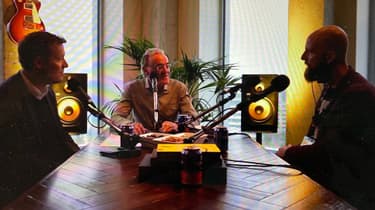
The decision of the CJEU in the Pelham case offers the users of sound samples, in my opinion, a bit more leeway. When it regards sound samples in a modified form unrecognisable to the ear then reproduction from a neighbouring rights perspective is out of the question and prior consent of the phonogram producer is therefore not required. Recognisable sound samples that engage, in one way or the other, in a dialogue with the sampled work may fall under the sound quotation right.
Moreover, in general the CJEU considers that ‘sampling technique’ – as, for instance, common in the musical industry – is a form of artistic expression that enjoys protection in the context of the freedom of the arts in pursuance of article 13 of the European Charter. Sampling can thus, according to the highest European court, be qualified as an art form itself, and not, as argued earlier and elsewhere, as a form of ‘musical piracy’ or ‘theft’. After Pelham the term ‘klankjatten’ (‘snitching sounds’) used in Dutch copyright literature long ago is in need of recalibration. In my view, an important establishment for, in particular, the process of musical creation because musical sampling has, in terms of connotation, been pushed out from a legal perspective for decades.
Read the article here.
more insights
Plus One Legal zoekt een student-stagiair(e) bestuursrecht
Ben jij een rechtenstudent met een interesse in het bestuursrecht? Lijkt het je interessant om te leren hoe vergunningen voor evenementen werken? Dan hebben wij een unieke stageplek voor jou!
04 December 2025
ReadBjorn Schipper geeft juridische verduidelijking over de nasleep van het optreden van Bob Vylan in Paradiso.
Voor NRC mocht Bjorn Schipper wat juridische duiding geven rondom de nasleep van het optreden van Bob Vylan in Paradiso.
17 September 2025
ReadOver contractspijt en bandrelaties – te gast bij Nieuwsweekend (Omroep MAX)
31 Augustus 2025 schoof Bjorn Schipper aan bij Nieuwsweekend van Omroep MAX naar aanleiding van de rechtszaak tussen Sting en zijn voormalige bandleden Stewart Copeland en Andy Summers van The Police. Centraal stond de vraag: hoe kunnen artiesten dit soort discussies over credits en royalty’s op latere leeftijd voorkomen? En hoe houd je het ‘bandhuwelijk’ zo gezond mogelijk? Wat voor bandleden geldt, gaat ook op voor de relatie tussen artiesten en labels. Regelmatig samen evalueren of de afspraken nog passen bij de huidige situatie voorkomt veel frustratie en scheve verhoudingen. Heldere, eerlijke afspraken zorgen voor balans én voor duurzame samenwerking. ‘Contractspijt’ mag dan een mooi woord zijn — wat mij betreft hoort het tot het verleden. Want: it takes two to tango. Het item is hier terug te luisteren of bekijken: 👉 https://lnkd.in/eGTWprDM
01 September 2025
ReadMuziekuitgeverij van Eminem heeft rechtszaak aangespannen tegen Meta
De muziekuitgeverij van Eminem heeft een rechtszaak aangespannen tegen Meta, het moederbedrijf van Facebook, Instagram en WhatsApp. Het techbedrijf van Mark Zuckerberg zou de muziek van de hiphop-artiest zonder licentie gebruiken. Bjorn Schipper, advocaat gespecialiseerd in de muziekindustrie, licht de zaak toe in Nieuws en Co.Audio: https://lnkd.in/ebAURbA2
04 June 2025
Read